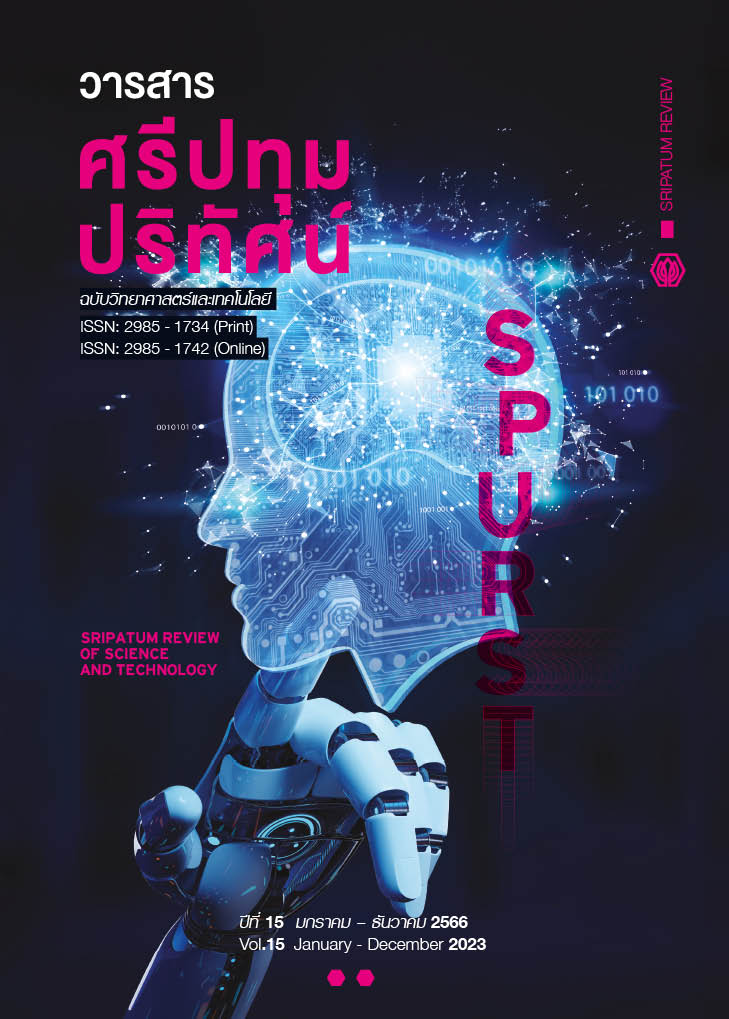The Development of Monitoring System for Elephant Intrusion Detection in Agricultural Areas to Reduce Human-elephant Conflict with Convolutional Neural network technology
Main Article Content
Abstract
Human-elephant conflict occurs due to the migration of elephants from their habitat to human agricultural areas in search of food and water resource. This research has therefore introduced Convolutional Neural Network Technology to reduce Human-elephant conflicts, with a framework called YOLOv5 is utilized for real-time object detection from video footage using embedded neural brain devices to monitor and prevent wild elephant intrusions into agricultural areas. First, researchers collected elephant image datasets from monitoring areas, leveraging the advancements in deep learning frameworks to develop Yolo-based architecture models suitable for embedded devices, ensuring both speed and accuracy. In this work, the researchers adjusted the hyperparameters for the YOLO model variants: YOLOv5N, YOLOv5S and YOLOv5M. The computations were conducted with reduced complexity and the proposed models are well-suited for embedded devices. After testing, it was observed that the YOLOv5S model achieved an average accuracy of 95.68% mAP@.5 with a speed increase of up to 50% compared to the YOLOv5M model, which had a maximum accuracy of 95.46% mAP@.5. Then, before deploying the models on embedded devices, researchers augmented the elephant image dataset from the internet for the YOLOv5S model. This augmentation improved the accuracy to a new value of 98.02% mAP@.5. After deployment, it was found that deep learning could accurately detect instances of wild elephant intrusions into agricultural areas, even though it may sometimes be slightly slower than human observation.
Article Details
References
Duporge, l. Isupova, O. Reece, S. Macdonald, D. and Wang, T. (2020). Using very-high-resolution satellite imagery and deep learning to detect and count African elephants in heterogeneous landscapes. Remote Sensing in Ecology and Conservation, 7, 369-381.
Girshick, R. Donahue, J. Darrell, T. and Malik, J. (2014). Rich Feature Hierarchies for Accurate Object Detection and Semantic Segmentation. Proceedings of the IEEE Conference on Computer Vision and Pattern Recognition (CVPR), 23-28 June 2014, at USA, 580-587.
Gur-Arie, L. (2022). The practical guide for Object Detection with YOLOv5 algorithm [Online]. Retrieved Dec 11, 2021, from: https://towardsdatascience.com/the-practical-guide-for-object-detection-with-yolov5-algorithm-74c04aac4843.
Hongboonmee, N. and Sitthichokchaisiri, T. (2021). The Development of Application for Analysis of Eye Health with ImageRecognition Using Deep Learning Technique. Sripatum Review of Science and Technology, 13(1), 7-21. (in Thai)
Jagannathan, S., Kumar, V., and Meganathan, D. (2019). Design and implementation of in-situ human-elephant conflict management system. Journal of Intelligent & Fuzzy Systems, 3, 2005-2013.
Kaewtathanawatthana, P. and Brorewongtrakhul, S. (2020). Guidelines for Solving Conflicts between human and Wild Elephants A case study: Phawa Sub-district, Kaeng Hang Maeo District, Chanthaburi. Journal of Humanities and Social Sciences, 12(2), 113-127. (in Thai)
Kumar, V., Recupero, D., Riboni, D., and Helaoui, R. (2020). Ensembling Classical Machine Learning and learning approaches for Morbidity Identification From Clinical Notes. Institute of Electrical and Electronics Engineers (IEEE 2021), 9, 7107-7126.
Liu, S., Qi, L., Qin, H., Shi, J., and Jia, J. (2018). Path Aggregation Network for Instance Segmentation. The proceedings of the 2018 IEEE Conference on Computer Vision and Pattern Recognition (CVPR), 18-23 June 2018 at Salt Lake City, Utah, USA, 8759-8768.
Madheswaran, K.M.S., Veerappan, K., and Kumar, V. (2019). Region Based Convolutional Neural Network for Human-Elephant Conflict Management System. The proceedings of the International Conference on Computational Intelligence in Data Science (ICCIDS 2019), 21-23 Feb 2019 at Chennai in India. (IEEE 2019), 1, 1-5.
Noonto, B., Savini, C., Sriktrachang, M., and Maneesrikum, C. (2018). The Voice of the People, the Voice of the Wild Elephants: The Trend of Community Responses to the Management of Human-Elephant Conflict in Thailand. Bangkok: The Thailand Research Fund (TRF) Community-Based Research Division. (in Thai)
Sanguansat, P. (2019). Artificial Intelligence with Machine Learning, AI can be created using machine learning. Nonthaburi: ICD-premier. (in Thai)
Solawetz, J. (2020). yolov5 improvements and evaluation [Online]. Retrieved Jan 22, 2022, from: https://blog.roboflow.com/yolov5-improvements-and-evaluation.
Ultralytics. (2021). yolov5 [Online]. Retrieved Jan 22, 2022, from: https://github.com/ultralytics/yolov5
Unzueta, D. (2021). Convolutional Layers vs Fully Connected Layers [Online]. Retrieved Jan 12, 2022, from: www.towardsdatascience.com/convolutional-layers-vs-fully-connected-layers
Yamashita, R., Nishio, M., Kinh Gian Do, R., and Togashi, K. (2018). Convolutional neural networks: an overview and application in radiology. Insights into Imaging, 9(4), 611–629.
Zhou, X., Gong, W., Fu, W., and Du, F. (2017). Application of deep learning in object detection. The Proceeding of the IEEE/ACIS 16th International Conference on Computer and Information Science (ICIS 2017), 10-13 December 2017 at COEX Convention Centre (Seoul) in South Korea, 631-634.


